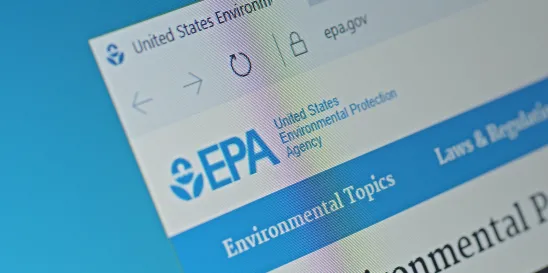See the announcement here.
The Final Rule implements changes from rulemakings under previous administrations that never took effect, requiring regulated facilities to revise their existing RMP compliance plans to comply with more stringent requirements. Regulated entities have three years to comply with many of the new requirements and four years to submit an updated risk management plan. Here we break down the changes to the rule and impacts for regulated facilities.
What is the RMP?
The RMP,[1] which covers approximately 12,000 regulated industrial facilities that use or store over a certain amount of listed hazardous substances, is one of EPA’s mechanisms to address the risks of chemical accidents. Under the rule, regulated facilities must develop Risk Management Plans. These plans must evaluate the risks of chemical releases, identify steps the facility is taking to prevent an accident, and develop emergency response plans in the event of a release. The regulations also require notification and coordination with local responders in the event of chemical emergencies. The program’s requirements are similar to the US Department of Labor’s (DOL) Occupational Safety and Health Administration’s (OSHA) Process Safety Management program.
The RMP applies to stationary sources of pollution from which an accidental release of a hazardous chemical may occur. EPA can enforce compliance with the RMP rule through administrative, civil, and criminal enforcement.
Changes Under Final Rule
The RMP has undergone several rounds of changes under previous administrations. The Final Rule reintroduces several changes that were proposed by the Obama Administration and later repealed by the Trump Administration. The Final Rule also adds several new, additional requirements.
The Final Rule includes the following changes:
- The Final Rule requires petroleum refineries, chemical plants, and coal product manufacturing facilities to include a Safer Technology and Alternatives Analysis (STAA) evaluation. STAA is a practice that requires companies to evaluate whether safer technologies and processes can be used at their facilities. The Final Rule also requires (1) petroleum refineries and chemical manufacturing facilities located within one mile of another petroleum refinery or chemical manufacturing facility, (2) refineries with hydrofluoric acid processes, and (3) facilities that had reportable accidents since the facility’s last process hazard analysis was performed to conduct additional technology and design assessments called ISD/IST assessments and document justifications when recommendations from those assessments are not implemented. The facilities subject to the ISD/IST requirements must implement at least one passive measure, equally protective active measure, or procedural control after performing a STAA evaluation if the methods are “practicable.”
- The Final Rule requires that facilities address the risks of natural hazards, including extreme weather events and the impacts of climate change, and power loss when conducing hazard reviews and analyses for risk management plans. EPA also noted that facility siting evaluations should properly account for hazards resulting from the location of processes, equipment, building, and proximate facilities, and their effects on the surrounding community. These three considerations — natural hazards, power loss, and siting hazards — would require a justification when facilities diverge from recommendations in their risk management plans.
- The Final Rule requires third-party compliance audits and root cause analysis incident investigation for facilities that have had a prior accident.
- The Final Rule implements increased emergency response planning requirements by requiring chemical release information to be timely shared with local responders. While the rule does not designate a specific time for sharing the information, EPA expects “owners and operators to provide initial information about their release to local responders as soon as possible, and to provide more accurate data or correct erroneous data that had been previously relayed when new information is available.” The Final Rule also includes implementation of a community notification system to warn of impending releases.
- The Final Rule contains increased employee participation and training requirements. In particular, the rule will require employers to consult with employees when making decisions on implementing recommendations from process hazard analyses, compliance audits, and incident investigations; provide employees the opportunity to stop work under certain circumstances; and provide opportunities for employees to report RMP non-compliance to EPA and other relevant authorities.
- The Final Rule requires RMP facilities to provide information about chemical hazards to people living or working within six miles of the facility upon request in at least the two most common languages of the community.
Impact on Regulated Entities
The Final Rule gives regulated entities three years to comply with most of the new requirements, including the new STAA, root cause analysis, third-party compliance audit, employee participation, emergency response, and information availability provisions. However, regulated sources have an additional year (i.e., four years) to update and resubmit risk management plans. The Final Rule also gives regulated sources varying deadlines to comply with the revised emergency response field exercise frequency provision, depending on the date of the entity’s most recent field exercise.
While the Final Rule is expected to be challenged, industrial facilities using or storing substances covered by the RMP rule should review their plans for compliance with these updated requirements.
[1] See Section 112(r) of the Clean Air Act and 40 C.F.R. Part 68.




 />i
/>i

